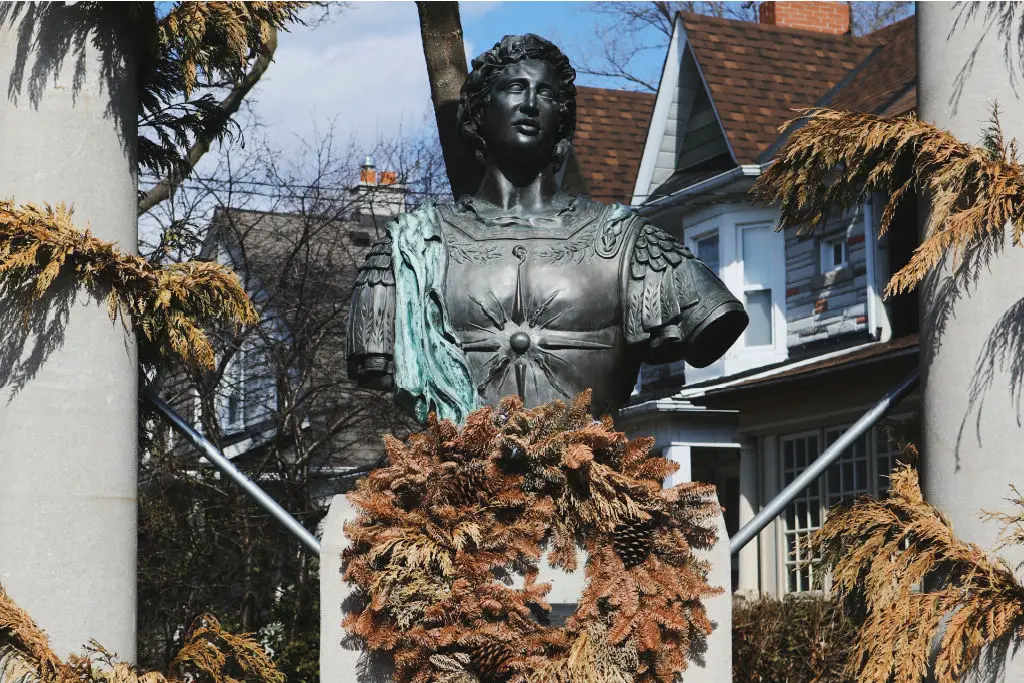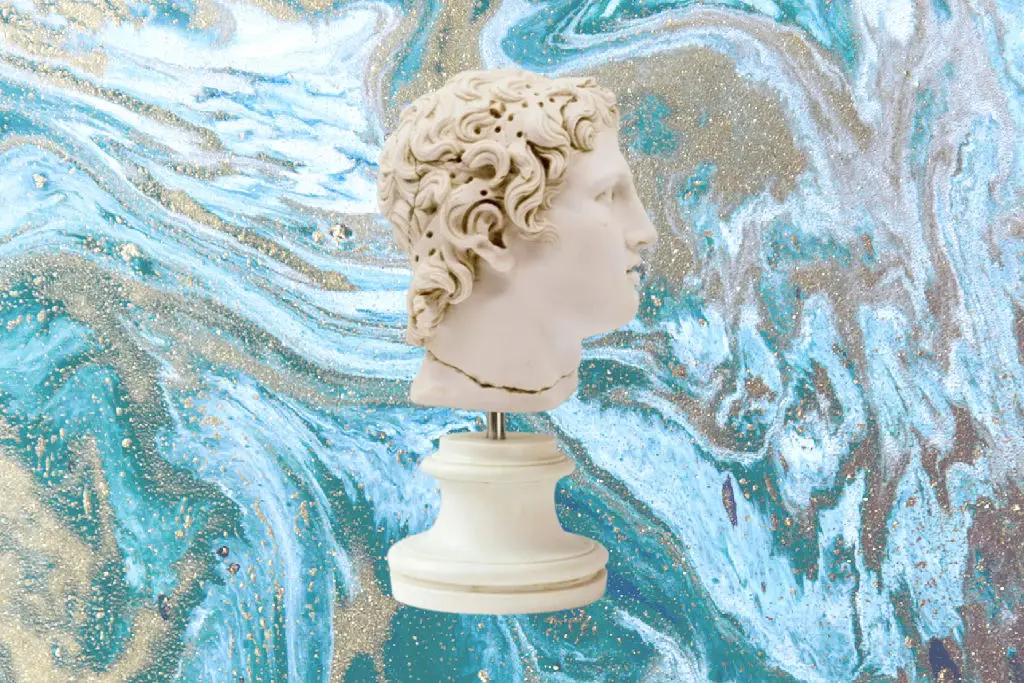With the recent release of Netflix’s new “documentary” series “Alexander: The Making of a God,” the question surrounding the sexuality of Alexander the Great has been a focal point of historical inquiry, eliciting a spectrum of interpretations and conjectures. At the heart of the discourse lies a scarcity of concrete evidence, leaving scholars to sift through fragmented accounts and cultural contexts in an attempt to unravel the enigma of Alexander’s romantic inclinations.
Within historical records, there exists a range of depictions regarding Alexander’s relationships and preferences. Certain historical accounts hint at Alexander the Great’s participation in close relationships with individuals of both genders, implying flexibility in his romantic interactions.
However, the extent to which this reflects his actual sexual conduct remains a matter of conjecture and interpretation, which some may find speculative at best. These accounts paint a portrait of Alexander as a figure unconstrained by conventional norms, exploring romantic connections irrespective of gender boundaries which is irresponsible and misleading.

Conversely, emphasis has been placed on Alexander’s profound bonds with male companions, particularly his relationship with Hephaestion. Their companionship, characterized by unwavering loyalty and mutual admiration, has prompted speculation among historians regarding the possibility of a romantic dimension to their association. Such conjecture is fueled by descriptions of their relationship in ancient texts, which often evoke imagery evocative of romantic devotion rather than mere friendship.
History Through Historical, Not Contemporary Eyes
Of course, in ancient Macedonia, certain practices and behaviors that might not have been considered inherently homosexual by the standards of the time could be perceived differently through a contemporary lens. One example is the communal bathing practices in ancient Macedonian culture, particularly in places like bathhouses or public bathing facilities.
Communal Bathing
In ancient Macedonia, communal bathing was a common practice and was not inherently sexual. Bathhouses served as social spaces where individuals of all genders would gather to bathe, socialize, and engage in discussions. These communal bathing practices were considered essential for hygiene and social cohesion rather than for sexual purposes.
However, from a modern perspective, the idea of communal bathing might be associated with nudity and intimacy, which could lead to perceptions of homoeroticism. It’s important to recognize that in ancient Macedonian society, nudity and physical closeness in communal bathing were not necessarily linked to sexual desire or orientation.
Physical Affection
Ancient Macedonian society placed a high value on physical expression and affection between individuals, regardless of gender. It was common for friends, family members, and even acquaintances to engage in physical displays of affection, such as hugging, kissing, or holding hands.
These expressions of intimacy were seen as natural and normal aspects of social interaction and were not necessarily indicative of sexual attraction. However, in contemporary Western societies, such behaviors might be more commonly associated with romantic or sexual relationships, leading to potential misinterpretations of historical interactions.
Master-Disciple Relationships
In ancient Macedonia, relationships between mentors (such as philosophers or teachers) and their disciples were highly valued and often involved close emotional bonds. These relationships could include physical closeness, such as sitting closely together during discussions or embracing as a sign of respect and affection.
While these relationships were primarily based on intellectual and educational pursuits, they could also involve elements of emotional intimacy. However, it’s important to avoid imposing modern concepts of sexuality onto these historical dynamics, as they were shaped by different cultural norms and expectations.
Overall, the challenge of discerning Alexander’s true sexual orientation is compounded by the limitations of historical interpretation. The lens through which we view antiquity is colored by cultural and social contexts vastly divergent from our contemporary understanding. Concepts of sexuality, love, and partnership in the ancient world were molded by cultural norms distinct from those of today, complicating efforts to impose modern labels onto historical figures.
Many who caution against presuming someone’s sexual orientation or gender are paradoxically among those who eagerly speculate about Alexander the Great’s romantic inclinations, some seemingly eager for confirmation of his bisexuality. It appears their desire for him to belong to the LGBTQ+ community overrides any sense of reason or logic towards various historical accounts, cultural contexts, and the social norms of the time. – Harry
Why Are Historical Characters Portrayed as LGBTQ+?
Filmmakers often take creative liberties when adapting historical events for entertainment purposes. They may choose to reimagine characters or events to create compelling narratives or explore themes that resonate with contemporary audiences.
In cases where historical records are scarce or ambiguous, as with Alexander the Great, creators may choose to depict characters as LGBTQ+ to provide representation and visibility to marginalized communities. By showcasing LGBTQ+ individuals in historical settings, creators can challenge stereotypes and highlight the presence of diverse identities throughout history which is what happened in “Alexander: The Making of a God.”

Unfortunately, some filmmakers may use the portrayal of LGBTQ+ historical figures as a form of social commentary, highlighting issues of discrimination, prejudice, and marginalization faced by LGBTQ+ individuals throughout history. By showcasing LGBTQ+ characters in historical settings, creators can draw parallels to contemporary social issues and promote empathy and understanding.
Filmmakers and writers may exercise their artistic freedom to challenge conventional narratives and offer alternative interpretations of historical events. While some audiences may object to these reinterpretations, others appreciate the creative exploration of historical figures and events.
The Mystery of Alexander’s Sexual Activities Are Confirmed
Suggestive language does not constitute evidence of sexual activity. While historical accounts may describe the close relationship between Alexander the Great and his companion Hephaestion in emotionally charged terms, such as describing them as “one soul abiding in two bodies,” or as having an extraordinary level of mutual respect and admiration, these descriptions alone do not provide concrete evidence of sexual activity between them.
In historical analysis, it’s crucial to distinguish between evidence and interpretation. While interpretations of Alexander and Hephaestion’s relationship as potentially romantic or sexual may be informed by these descriptions, they remain speculative in the absence of direct evidence or explicit statements from contemporary sources confirming such activities. Therefore, it’s important to approach discussions about historical figures’ sexuality with a critical eye and an acknowledgment of the limitations of available evidence.
Alexander Was Married to Multiple Women
Here’s what we do know; Alexander the Great was married. He married three times during his lifetime and had at least one child. Also, Alexander had several female mistresses.
Wife #1: Roxana (also known as Roxanne or Rukhsana)
Roxana was a Bactrian noblewoman whom Alexander married in 327 BC in what is now modern-day Afghanistan. Their union was politically motivated and aimed at fostering goodwill between Alexander and the local ruling elite. Roxana later bore Alexander a son, also named Alexander, who would later be known as Alexander IV after his father’s death.
Wife: #2: Stateira II
Stateira II, also known as Barsine, was the daughter of the Persian king Darius III. After Alexander’s conquest of the Persian Empire, he married Stateira II in a symbolic gesture aimed at solidifying his control over the region. Stateira II, along with her sister, became part of Alexander’s harem.
Wife #3: Parysatis II
Parysatis II was the daughter of Artaxerxes III, another Persian king. Alexander married her during his campaign in Persia, likely for similar political reasons as his marriage to Stateira II. Like Stateira II, Parysatis II became one of Alexander’s wives.
Of course, these marriages were strategic alliances aimed at consolidating power and maintaining stability in the vast empire Alexander was building through his conquests. However, Alexander’s treatment of his wives, and love for them, and his willingness to incorporate them into his political and social life suggest a level of respect and consideration for their roles in his empire. They also served to integrate him into Persian society and demonstrate his respect for local customs and traditions.
Alexander’s Mistresses

Overall, while there are accounts and legends about various women who may have been associated with Alexander the Great romantically or sexually, the extent and nature of these relationships remain speculative due to the limitations of historical evidence and the influence of myth and legend. Nevertheless, historical documentation suggests that he had several mistresses including the ones below.
Callixena
Callixena is described as a courtesan, which suggests that she may have been involved in romantic or sexual relationships outside of marriage. However, specific details about her relationship with Alexander are not extensively documented in historical sources.
Campaspe
Campaspe is traditionally depicted as a mistress or lover of Alexander the Great in various literary works and artistic representations. According to legend, she was a beautiful woman whom Alexander fell in love with and later gifted her to the painter Apelles as a gesture of appreciation for painting her portrait.
Cleophis
Cleophis, also known as Cleophis of India, was a queen or ruler of a part of India whom Alexander encountered during his campaign in the region. While there are accounts of diplomatic interactions between Alexander and Cleophis, there is no concrete evidence to suggest that she was his mistress.
Thaïs
Thaïs was a well-known courtesan in ancient Macedonia, and some accounts suggest she was present during Alexander’s conquest of Persia. According to some sources, Alexander may have had a romantic or sexual relationship with Thaïs, but the extent and nature of their connection remain speculative.
Thalestris
Thalestris is a legendary figure described in ancient sources as the queen of the Amazons. According to some accounts, she visited Alexander the Great and proposed to have a child with him to create a race of superior warriors. However, there is no concrete evidence to support the existence of such an encounter, and it is likely a mythical or literary embellishment.
There Is No Evidence To State That Alexander Was Bi/Homosexual
Overall, the veracity of historical sources must be scrutinized, as biases and agendas often permeate ancient accounts. Narratives of Alexander’s life were crafted by individuals with their own perspectives and motivations, shaping the portrayal of his character and relationships in ways that may not align with objective truth.
Yet, the challenge of discerning Alexander’s true sexual orientation is compounded by the limitations of historical interpretation. The lens through which we view antiquity is colored by cultural and social contexts vastly divergent from our contemporary understanding. Concepts of sexuality, love, and partnership in the ancient world were molded by cultural norms distinct from those of today, complicating efforts to impose modern labels onto historical figures.
In essence, the question of Alexander the Great’s sexuality invites us to navigate the murky waters of historical ambiguity, challenging preconceptions and prompting reflection on the nature of identity, desire, and intimacy in both past and present contexts. It stands as a testament to the enduring allure of history’s mysteries and the perennial quest for understanding the complexities of the human experience. However, projecting modern concepts of sexuality onto historical figures like Alexander the Great, who lived over three centuries before the birth of Jesus Christ, in the absence of credible evidence, is highly speculative and irresponsible.
Disclaimer: This historical article is based on commonly known information and not original research conducted by the author.
We Need Your Help
Did you find this article helpful? If so, bookmark it and when you’re planning your next vacation click on any of the links below before finalizing reservations. You’ll get the best price, we’ll earn a small commission, and you’ll help support future articles.
Thank you!
BEST TRAVEL SEARCH ENGINES
🏘️ Book Your Accommodation
We use Tripadvisor and Priceline’s Express Deals to compare prices and reviews in advance and check availability
✈️ Book Your Flight in Advance
To find the cheapest flight options, you can use CheapOAir and Skyscanner to find the most suitable choice for you
🚗 Reserve Your Rental Car
Use DiscoverCars and Skyscanner to compare prices and view the largest selection of vehicles





